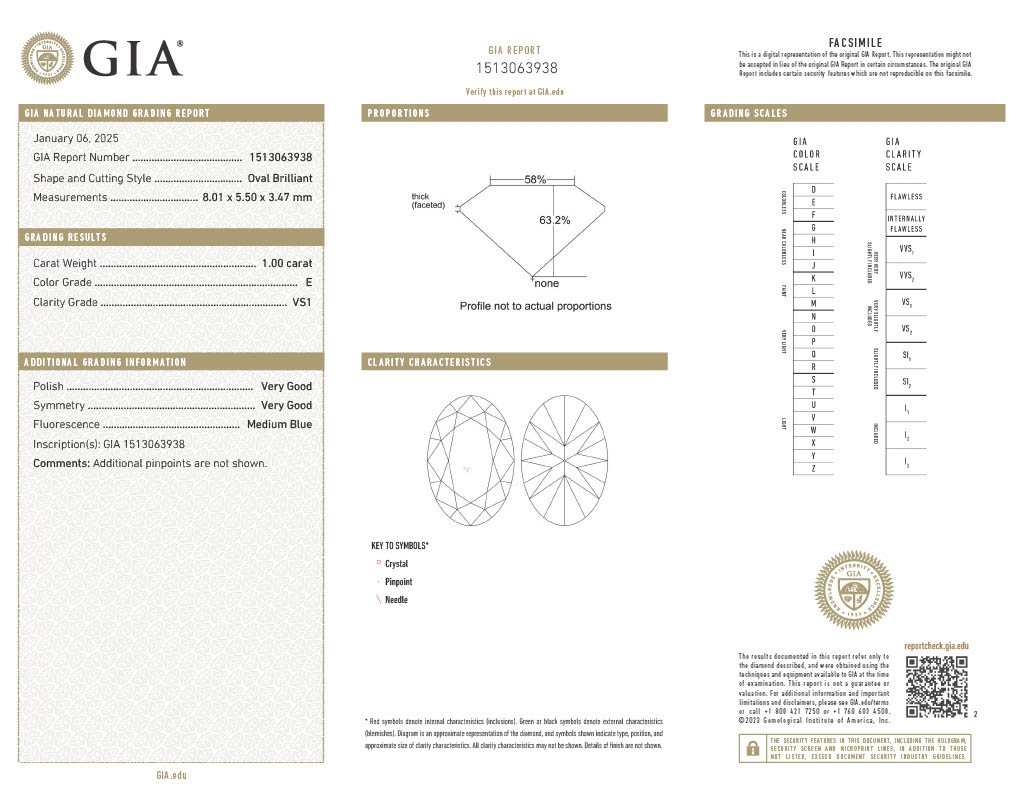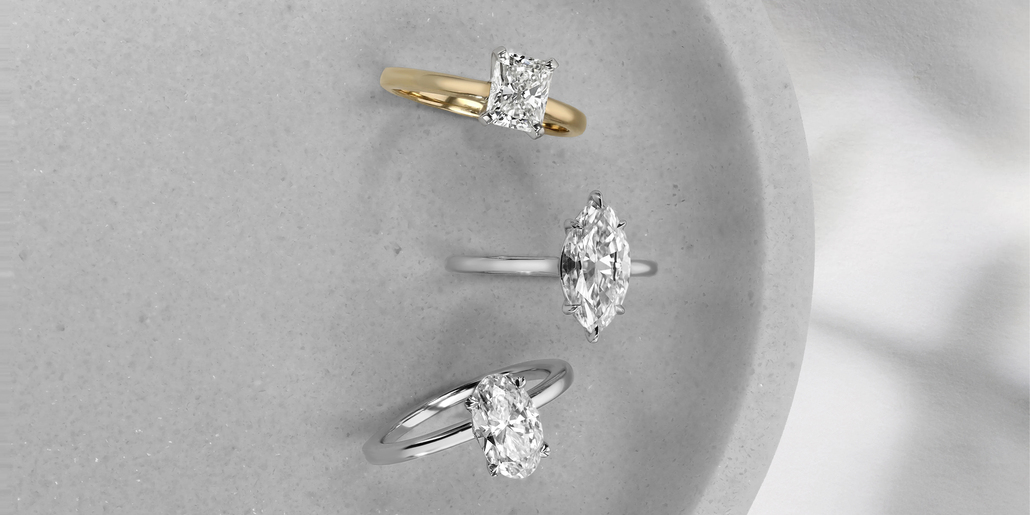What Is Diamond Fluorescence?
Fluorescence in diamonds refers to the way a diamond reacts to ultraviolet (UV) light, a type of light invisible to the human eye but present in natural sunlight and many artificial light sources like black lights.
Specifically, when a diamond with fluorescence is exposed to UV light, it emits a visible glow—usually a soft blue, but sometimes other colors like yellow, green or orange. This glow is caused by certain trace elements within the diamond’s crystal structure that absorb the UV light and re-emit it at a different wavelength.
The intensity of fluorescence varies widely among diamonds. Some diamonds show:
- None (no fluorescence visible under UV light),
- Faint (very weak glow),
- Medium (noticeable glow),
- Strong or even
- Very Strong fluorescence.
What Is the Most Common Fluorescence Color in a Diamond?
Blue fluorescence is by far the most common, but diamonds can fluoresce in a range of colors, including:
- Blue: Most common and usually considered attractive.
- Yellow: Less common, can sometimes affect color perception.
- Green, Orange, White: Rare and can produce unique effects.
Each fluorescence color results from different impurities or structural anomalies inside the diamond.
Does Fluorescence Affect a Diamond’s Appearance?
This is one of the most debated aspects of fluorescence in diamonds. The effect of fluorescence on a diamond’s look depends on:
1. Fluorescence Intensity
- None to Faint: Typically no visible effect on appearance in normal lighting.
- Medium to Strong: Can sometimes cause a diamond to appear hazy, oily or milky under daylight.
- Strong to Very Strong: Some diamonds might look cloudy or less transparent.
2. Diamond Color Grade
- In colorless diamonds (grades D-F), strong fluorescence can sometimes cause a slight haziness.
- In near-colorless or lower color grades (G-J and below), blue fluorescence can actually make the diamond appear whiter or brighter, masking some yellowish hues.
3. Lighting Conditions
Fluorescence is only visible under UV light or sunlight containing UV rays. Indoors under typical incandescent or LED lighting, fluorescence generally won’t be noticeable.
How Common Is Fluorescence in Diamonds?
Approximately 25% to 35% of natural diamonds display some degree of fluorescence. The majority of these exhibit blue fluorescence, especially those sourced from certain famous diamond mines, like those in Africa.
Because it is so common, fluorescence is not necessarily a defect or flaw but rather a natural characteristic.
Do Lab-Grown Diamonds Have Fluorescence?
Yes, lab-grown diamonds can exhibit fluorescence, just like natural diamonds. Learn about how lab-grown diamonds are created in this article.
How Does Fluorescence Affect Diamond Value?
The impact of fluorescence on price varies among the market and individual buyers. Diamonds with no or faint fluorescence are typically considered neutral and command standard market prices. Medium to strong fluorescence can sometimes lead to a softening of prices by 5-15%, particularly in high-color diamonds where it may cause a slight haziness. However, in some cases, fluorescence can actually increase value, especially in lower color diamonds like I, J or K, where blue fluorescence can improve the diamond’s apparent whiteness and overall appeal.
Is Diamond Fluorescence Good or Bad?
Whether fluorescence is a positive or negative trait depends largely on personal preference, the diamond’s color grade and the way the fluorescence influences its overall appearance.
Pros of Fluorescence
- May improve color appearance in lower color grades.
- Often available at a better price point than similar diamonds without fluorescence.
Cons of Fluorescence
- Strong fluorescence can sometimes cause haziness or oily appearance.
- May be undesirable if you prefer diamonds that look perfect under all lighting conditions.
- Some simply prefer diamonds with no fluorescence due to traditional standards.
So, should you avoid diamonds with fluorescence? Not necessarily.
When buying a diamond, fluorescence will be noted on the diamond grading report from labs like GIA. The report will state the fluorescence intensity, typically ranging from None to Very Strong.
If possible, view the diamond under various lighting conditions including natural daylight to see if fluorescence affects its appearance.

Whether you embrace the colorful glow or prefer a diamond without it, fluorescence is simply one of many characteristics that make each stone one of a kind. Explore more Diamond Education articles on our blog, The Loop.

